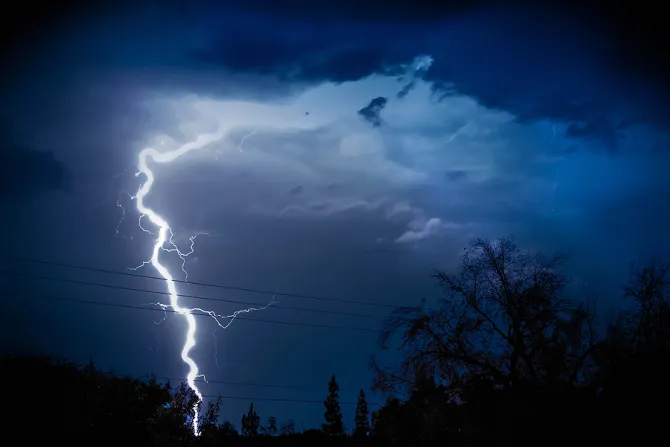Rome, Italy, May 23, 2015 / 03:02 am
With 3-4 months of heavy rain at their doorstep, Nepal citizens who have been without shelter for nearly a month due to several massive earthquakes are desperate to find some sort of sturdy housing.
"The greatest need right now is shelter, because within a month, the monsoon rains will start…that is going to change the situation totally," director of Caritas Nepal, Father Pius Perumana, said.
"All these hills which are shaken, when the rain starts coming there are going to be a lot more landslides. Even in normal conditions we have massive landslides every monsoon, and with the entire hilly region shaken, it is going to be terrible," he said.
Fr. Perumana was in Rome for the charity organization's annual international general assembly May 12-17. He spoke with CNA the day after his country was hit by their third massive earthquake in less than two weeks.
On April 25, a quake that measured 7.9 on the Richter scale ripped through Nepal's capital, Kathmandu, killing more than 8,000 people.
"We saw right in front of our eyes, the houses shaking and crumbling, people crying for help and running in all directions…I myself felt helpless, I didn't really know what to do," Fr. Perumana said.
In addition to the many aftershocks that came, the priest said the situation was complicated even further when the next day another earthquake measuring 6.9 hit the country. When the third, 7.4 quake shook the country again May 12, it only brought "more destruction," he said.
As the frightening scene unfolded the day the first earthquake hit, Fr. Perumana said that he and the other Caritas workers tried to make it to their office and gather the staff in order to "start some sort of help."
"We were all lost because our own staff, many of them lost their own houses," he said, explaining that with electricity and phone lines down they weren't able to do much the first night apart from hand out sheets to the people they found gathered around their office and the city's cathedral.
The priest said that, according to the experts, the pattern of the first two quakes was unusual, since the first struck from north to south, while the second went east to west.
The earthquakes, he noted, "literally shook Kathmandu Valley, and Kathmandu was shifted to the south by 10 feet – that is more than 3 meters."
"It also raised the Kathmandu Valley by nearly 1 meter. The whole Kathmandu Valley came up and they also say Everest lost some inches of its height, so it literally shook the entire Nepal."
Roughly 8 million people have been affected by the quakes, and more than 400,000 houses have been destroyed. Numerous schools have also fallen, and 14 districts in Nepal reported that more than 80 percent of their houses were gone.
In addition to the high number of deaths, close to 25,000 people have been injured. With many roads gone due to landsides, the logistics of making it to remote areas have been perplexed, and the situation is further complicated by the fact that Nepal only has 1 small airport handling all of the materials that come in, Fr. Perumana said.
"The main problems we are facing are problems of shelter, medicine, food, wash materials," as well as reaching the far out villages.
Fr. Perumana said that since day-one several other Caritas branches have come to their assistance, including Caritas Asia, Australia, Belgium and India, who were gathered for a farmers conference when the first quake struck.
Since then they have organized a coordination committee, and appointed Caritas Australia as the facilitator for other Caritas branches coming from all over the globe. While Caritas Nepal is playing the leading role, "we are organizing the help together," the priest said.
However, he expressed his concern that the situation would quickly spiral down without finding more shelter, food and medicine for those who have been left without a home.
"These three have to go together, because as I said, they are great needs right now."
Nepal is one of the poorest countries in Asia, and has an estimated population of 27 to 28 million.
The epicenter of the first earthquake was 80 km northwest of the country's capital, Kathmandu, where the force of the quake toppled a 100-year-old temple, split roads, and destroyed houses and buildings.
Tremors could be felt as far away as New Dehli in India, and aftershocks continued to shake the area for hours after the initial quake. It was the second-worst earthquake in Nepal since 1934, when an 8.0 magnitude earthquake all but destroyed the cities of Kathmandu, Bhaktapur and Patan.



